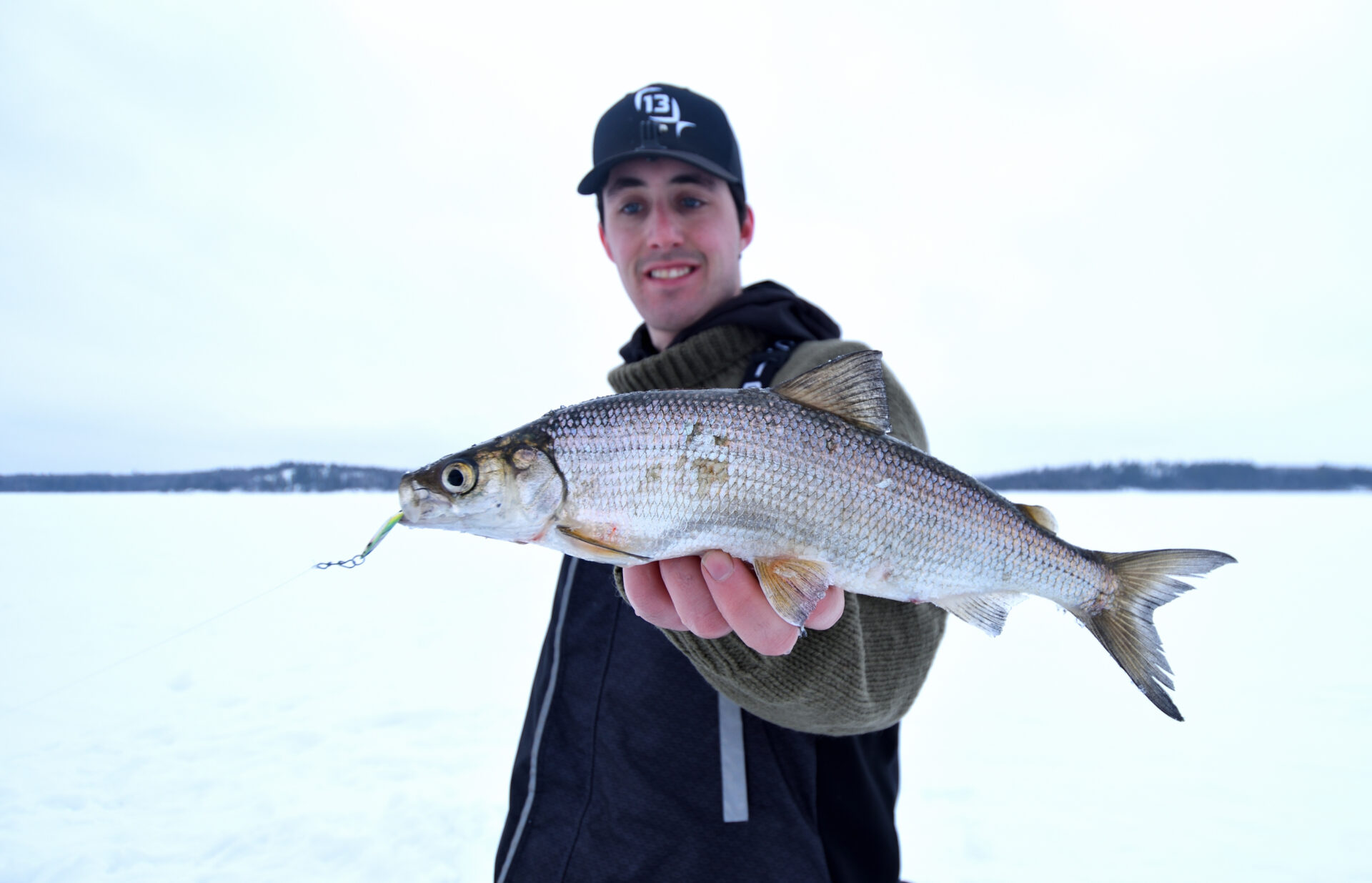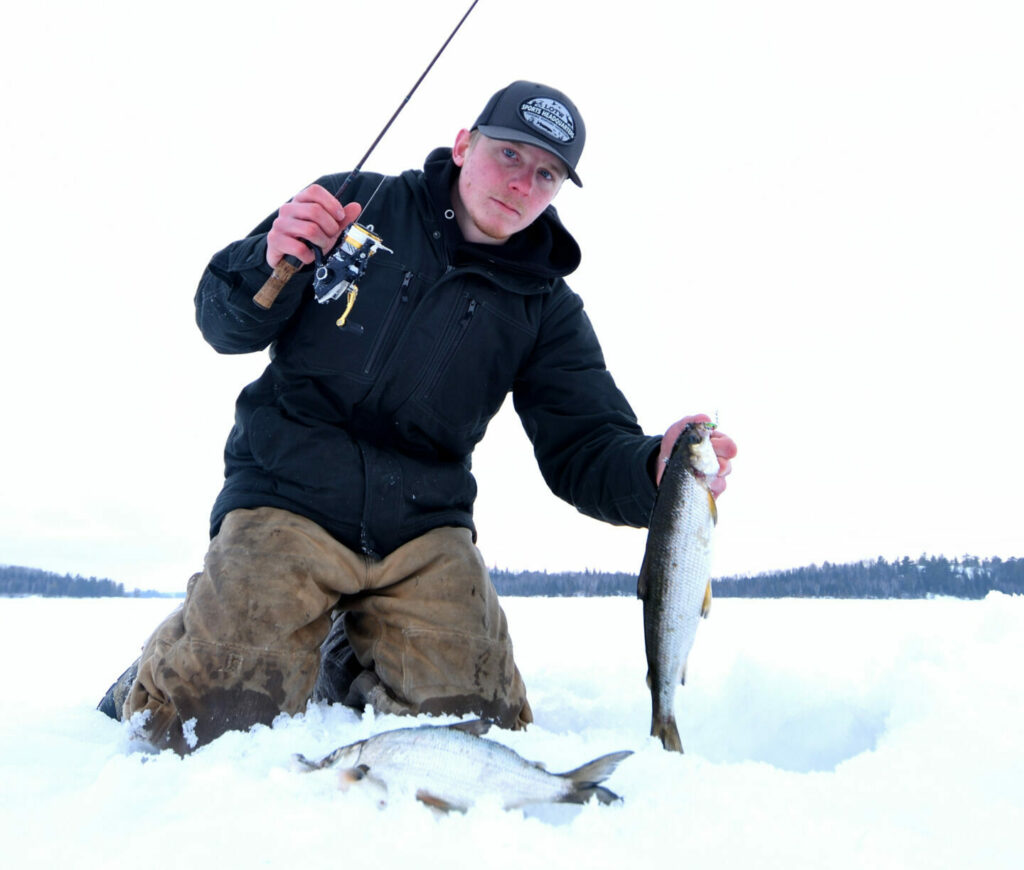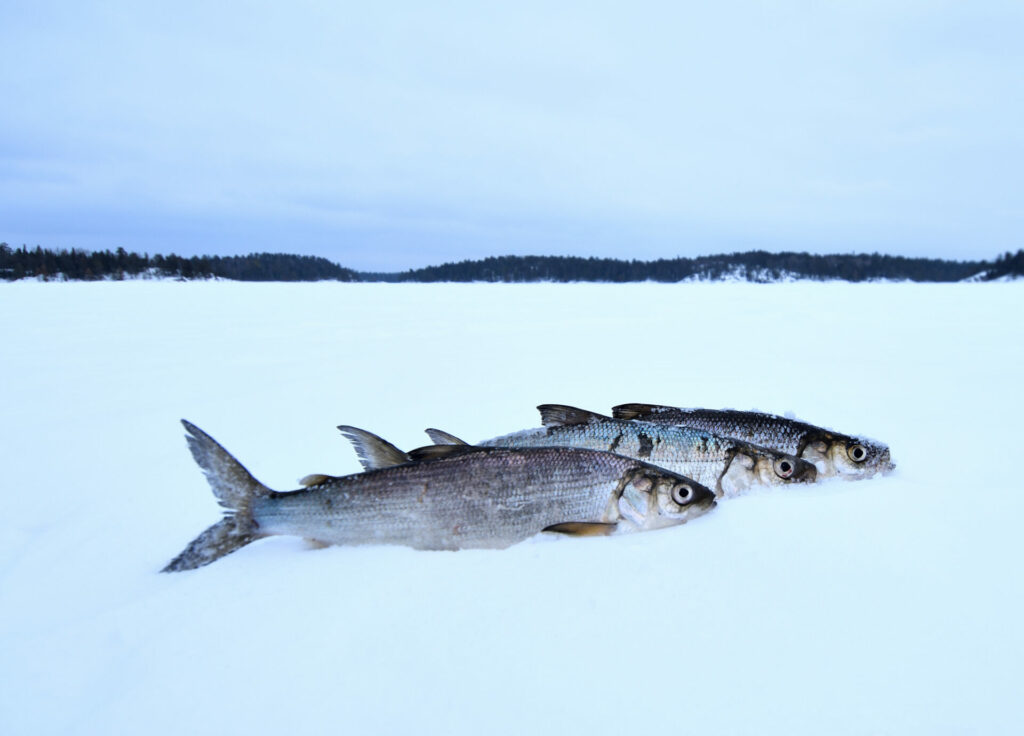CISCOES IN THE COAL MINE
As cisco numbers decline due to warming waters, gamefish are going hungry
Advertisement
What started out as a great day ice fishing for lake trout the other day, with my grandson Liam and his buddy, Luke Dewson (below), turned into an even more fun day fishing for ciscoes (Coregonus artedi). These are the same fish that many anglers call “tulibees” or “lake herring.” Ciscoes are an extremely common fish in lakes across the country, especially in deeper bodies of water that stratify in the summer. In fact, many fisheries managers refer to a lake’s thermocline—the thin layer of water that separates the upper warmer water, from the deeper, colder zone—as the “cisco layer.”
Advertisement
I grew up ice fishing for ciscoes on Lake Simcoe back in the 1960s and 70s, when it was common to catch 50 or more a day. We jigged Williams ice spoons for them, but first we removed the treblehook, added a four-inch leader to the split ring, and then attached a tiny treble hook, to which we’d glued a white pearl bead. Ciscoes are like fighter pilots that will eagerly engage in mid-water dogfights with your lure, chasing it around and attacking it.
I should mention, too, that while we tend to refer to them as ciscoes, as though they’re a single fish, they are in fact one of our most complex and intriguing species. So much so, that fisheries folks commonly talk about the “coregonid problem.” As amazing as it sounds, there can be two or three different strains of ciscoes in a lake and they not only look different to the eye, they occupy different sections of the lake, behave in quite varied ways, and may even be incapable of spawning with each other.
But all ciscoes fulfil a critical role wherever we find them. They consume the lake’s primary production—phytoplankton and zooplankton—and convert it into high-quality fish flesh, which is subsequently consumed by top predators like lake trout, walleye, bass, northern pike and muskies. But there are problems looming on the horizon—big problems—because cisco populations are declining significantly, and quickly, across their traditional range.
Advertisement
Because ciscoes are a stenothermal fish, they’re restricted to a very narrow range of temperatures, so they function like canaries in coal mines. And these cisco canaries are sounding the alarm about water temperatures.
Advertisement
As ice leaves our lakes earlier in the spring, freezes later in the fall, and water temperatures are increasing in the summer, the cold, oxygenated layer of deep water that supports cisco populations is often decreasing. We are seeing it happen most often in the southern portion of the cisco range, in places like Wisconsin, where up to 70 per cent of the cisco populations in the state’s 170 deepest lakes could disappear in the upcoming years.
I had a fascinating conversation a while back with good friend and former OMNR colleague, Dr. Peter Colby, who headed up Ontario’s walleye research program. Peter told me that many of the deep-water walleye populations in Wisconsin, which traditionally fed heavily on ciscoes, have now retreated into warmer, shallow water to feed on yellow perch. The costs in terms of energy, growth and fecundity have been enormous. Instead of eating high-calorie steaks, in the form of ciscoes, they’ve been forced to eat hamburger dinners of perch. As a result, the walleye are much smaller and lighter, and they produce fewer eggs.
In Mille Lacs Lake in Minnesota, on the other hand, the cisco population appears to be doubly jeopardized. Mille Lacs is shallow enough—most of the lake is in the 20- to 35-foot range—that it doesn’t stratify in the summer. So, lacking a deep thermal refuge, the ciscoes have nowhere to go when the water warms up.
I mentioned earlier that I grew up ice fishing for ciscoes on Lake Simcoe. Back then, we drove out onto Cook’s Bay over the Christmas holiday. This year, the big lake, which represents the largest ice fishery in the province, barely had ice.
Is that a canary I can hear?



